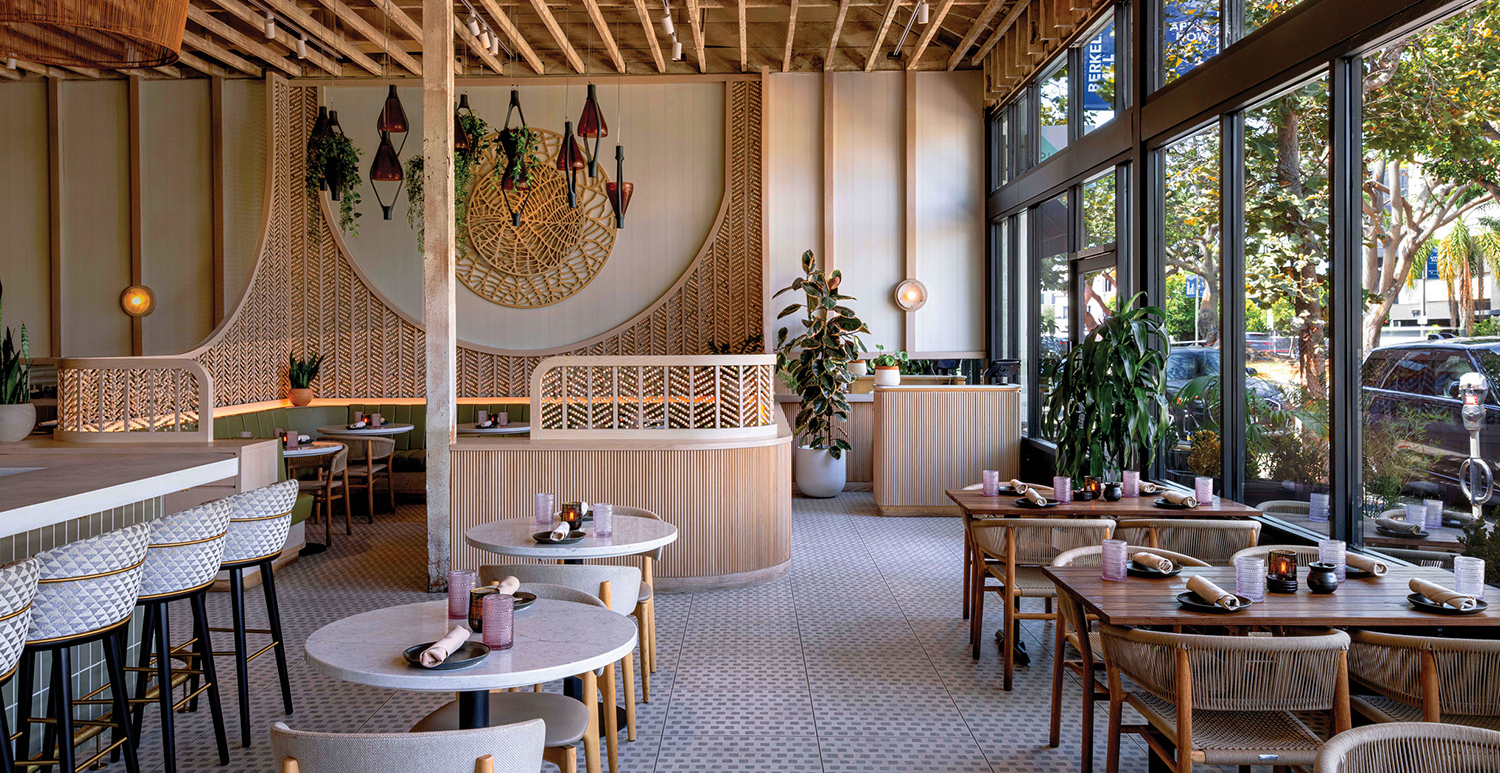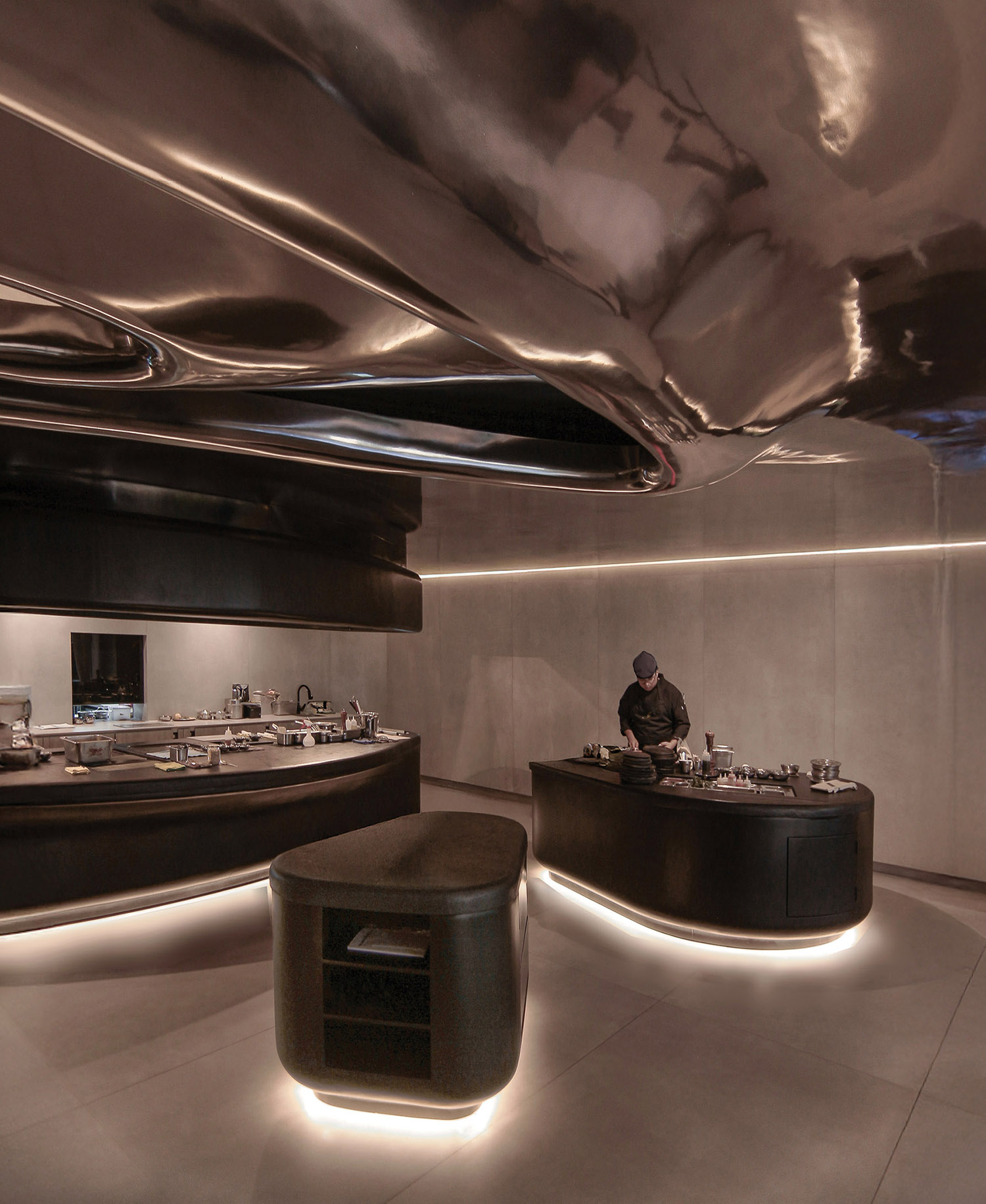No Velvet Rope: A Down-To-Earth Club in NYC’s Meatpacking District
If anyone knows New York nightlife, it’s Lionel Ohayon. His architecture firm, ICrave, has designed 23 Manhattan clubs and restaurants, among them Crobar, Koi, and STK. Eight have been in the red-hot meatpacking district—where he’s like the mayor, walking along, exchanging first-name greetings with countless passersby and the doormen of the Hotel Gansevoort. “I’ve witnessed the transformation and maturing of this neighborhood,” he says. There were just a few biker bars and a couple of pioneering restaurants among the meatpackers in 2002 when he opened ICrave’s studio in the area and signed on to design One, a nightclub in a 1910 brick building. He was also a part-owner.
When the economy tanked, he says, “I felt it was time to reevaluate what we were doing, to remove the pretension from design.” He and his partners closed One, freeing up the space to become the vehicle for this new agenda. ICrave senior designer Robert DelPazzo, an architect who grew up in Brooklyn, became Ohayon’s like-minded right-hand man. “After a decade, it was time to get back to craft, back to our roots,” DelPazzo concurs. Perhaps no other project in the city or, for that matter, the world does so more thoroughly than the Collective, a fun house of a restaurant-lounge where literally every nook and cranny is drenched in homespun ingenuity.
Located on a highly visible corner, the Collective was to be, Ohayon says, “the meatpacking district’s lobby, a place where people could meet up easily, have a drink or a snack, and be comfortable. No door policy. No bottle service.” Since ICrave had already renovated the 5,000-square-foot interior, nothing structural needed to be done. Even the existing function zones could remain: main dining, bar, upper lounge. Instead, all effort could go toward repurposing discarded materials, objects, and furniture, from plastic medicine bottles to claw-foot bathtubs and a cabinet for a sewing machine-metaphors for a reinvented neighborhood. “All the elements were to evoke a memory and make people think about reuse,” DelPazzo explains. “Can old license plates become a bird-themed art installation? Can a used clarinet become the base of a lamp?” Yes, apparently, they can.
He began his search with hours spent online at the Web sites of Craigslist, eBay, and Etsy. That research was supplemented by 10 weekends of visits to such open-air sources as the Hell’s Kitchen Flea Market and Brooklyn Flea. “I would buy things I liked, for instance a pair of boxing gloves, not knowing how I was going to use them,” he says. Another find was new talent: artists and artisans who shared the architects’ interest in repurposing. However, functioning as a collective to design the Collective would require renting a studio where everyone could work full-time. That studio ended up being in the same Hell’s Kitchen building as DelPazzo’s loft, conveniently enough. “With the recession, a lot of spaces became available and affordable,” he notes. After three months, the 11-person group had created 150 pieces of furniture.
DelPazzo met two members of the team, Myriah Scruggs and Nadia Yaron, at Brooklyn Flea. Stopping by the booth where they were selling their “reincarnated” furniture, as they call it, under the name Nightwood, he admired their style of piecing together found wood into cabinets, tables, and benches-an aesthetic he thought would be great for the Collective’s floor. Despite never having completed a project of that scale, 1,500 square feet, the pair jumped at the opportunity, ultimately finding 2,500 pieces of oak and ipe floorboards and laying them out in a patchwork pattern. “It was grueling,” Scruggs recalls, “but a great pleasure to work in an atmosphere that actually functions like a collective.” You could say as much for Burning Man, the Nevada desert festival where DelPazzo encountered artists Yarrow Mazzetti and Joe Snider of OverKill, who were putting up an enormous scrap-metal installation. For the Collective, they welded together vintage gears into a screen near the entrance and bent old license plates into bird shapes for what DelPazzo calls the “flock of seagulls” above the communal table.
It can take a few beats to digest the variety of components overall. A lamp might be made from a parking meter or a standing hair dryer. Scrabble tiles top an otherwise nondescript table. An ink drawing in jet black and rose red punks up a “granny-style” 1940’s settee. Medical chairs from the 1930’s have seats reupholstered in a pill pattern. And those boxing gloves that DelPazzo didn’t know how he was going to use? They’re attached to the ends of one of the medical chairs’ arms, like a pair of hands.
Although the lion’s share of the Collective’s furnishings have had a previous life, a few were bought new. “I was constantly trying to think of unlikely, inexpensive materials that could yield a beautiful texture,” DelPazzo says. One such local find inspired what he calls the “sea urchin,” a column bristling with black plastic cable ties. He bought 5,000 for just $200.
Photography by Eric Laignel.
PROJECT TEAM
Siobhan Barry; Monika chmielewska: ICrave. Michael Whitney: Woodwork. Design to Live: General Contractor.


